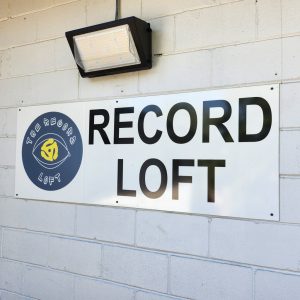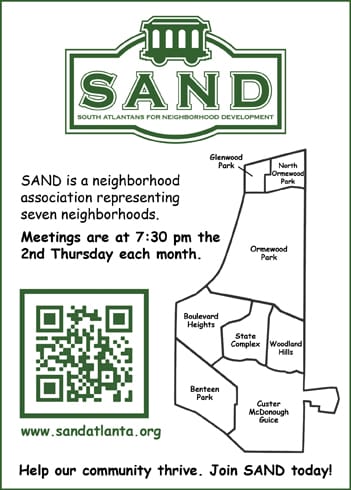By Steve Norman
When a city notice went up on Moreland Avenue in August about clearing some trees for a new business, many people were too busy navigating the antics of Moreland to pay much attention to it. Perhaps some people noticed it, wondered what it was about, but then let it slip from memory while trying to remember if tomorrow was trash day.
One SAND neighbor, however, took note of it. After reading the notice, John Morse realized that a business had requested to remove almost every tree from the lot, one of the few remaining commercial lots with any substantial green space on Moreland Avenue. Rather than shrug it off and think that it must be OK if the city is thinking about issuing a permit, Morse decided to see what he could do to prevent the apparent clear-cutting of the lot.
Untrained and inexperienced with matters such as permits and ordinances, Morse did his own research to see if there was any way to stop or minimize the removal of the trees. He scoured the city’s arborist division’s appeals information online and filed an appeal to the permit, which had been granted by the city arborist. The applicant asked to have the appeal dismissed as ‘frivolous,’ but the committee granted a hearing.
Morse got the backing and support from SAND, and the elected city and state officials who represent the property and its environs. The committee refused to uphold the permit, deferred the case until October, and asked all involved parties to develop an alternative plan.
With help from city councilpersons Natalyn Archibong and Carla Smith, Morse set to work scheduling meetings – inviting residents, the applicant, and the city arborist, to brainstorm on ways to save the trees and still allow the specifications required for building a business on the lot. Morse also engaged Trees Atlanta to help rebut claims that many of the trees on the lot were diseased or unsafe.
In spite of the applicant’s architect/builder and engineer not being present at the meetings, John Morse was able to sketch and present a new plan, reducing the number of felled trees by 53 percent, including oak trees that measured 22” and 48” in diameter. He was excited that his hand-made sketch might just satisfy all the requirements. “I presented an alternative plan for [the] franchise which would save most of the major trees on the property,” he stated.
When the owner mentioned that the costs of doing another design would be prohibitive for the project, Morse was able to find pro-bono assistance with a new plan from local architect Jim Winer, of Menefee & Winer Architects.
Due to a lack of quorum at the October hearing, the appeal was deferred until November 16. The public meeting is scheduled for 6:30pm, at City Hall, 55 Trinity Avenue, Committee Room Two.
This could be the last chance for the neighborhood’s efforts to ensure that smart development can indeed still happen, and provide a footprint of how one motivated person can inspire neighbors, developers, and the city to recognize that the rubber-stamping of cookie cutter developments does not have to be the norm.









Comments are closed.